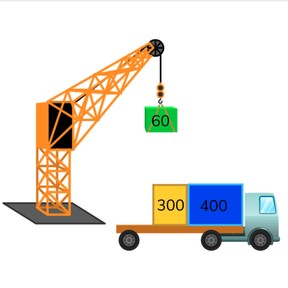



8,000 schools use Gynzy
92,000 teachers use Gynzy
1,600,000 students use Gynzy
General
Students are able to add to 1,000 with three or more random numbers.
Common core standard(s)
2.NBT.B.7
Relevance
It is important to be able to add to 1,000, to be able to determine totals of large amounts.
Introduction
Students practice addition to 1,000 regrouping tens and hundreds. Discuss the different ways to solve the addition problems with the students.
Development
Discuss with students the importance of adding to 1,000. Show them the addition problem (148+113+172) on the interactive whiteboard and ask students how they would go about solving this problem. Explain that you first look to see which numbers together total a round number. In this case it is 148+172 because they equal a round number. Then you add the final addend. Explain the other method. You first add the hundreds, then the tens, and finally the ones. Emphasize that students should choose the method that they feel most comfortable with. Check that students are able to solve an addition problem. Then introduce them to an addition problem with 4 addends. Discuss the different ways to solve this problem. You can make two pairs of addends to add to total round numbers: 202+198 and 123+226. You add those totals together. Check that students are able to solve addition problems with four addends. Then show students an addition problem in table form. Remind students that they can form pairs from any of the four addends in the table. Check that students are able to solve an addition problem in table form. Students are then shown a receipt as a real world example of adding multiple addends. They are then given a story problem to solve. Remind students of the steps to take when solving a story problem and then ask them to solve a story problem.
Check that students can add up to 1,000 with three or more random numbers by asking the following questions:
- Why is it useful to be able to add to 1,000?
- Which method do you like to use when adding three or more random numbers to 1,000?
Guided practice
Students first practice with an abstract addition problem. They then are given an addition problem in table form, and then are given a story problem to solve.
Closing
Check that students have understood the instruction by asking them how they would add an addition problem up to 1,000 with three or more random numbers. Emphasize that each student will have a different favorite method and that they should use the one they feel most comfortable with. The next exercise gives one abstract, one table-form, and one story problem to solve.
Finish with a game. Ask students to pick a square to uncover. If they uncover a spider they're out. If they're the one to find the fourth addend, the whole class must solve the problem.
Teaching tips
Students who have difficulty adding to 1,000 with multiple random numbers can be supported by first practicing skip counting by hundreds to 1,000. They can also use the number line to help make these steps concrete for the student. They can also use MAB-blocks to show what happens in addition and to help visualize the different addition methods.
Instruction materials
Optional: MAB-blocks and number line
The online teaching platform for interactive whiteboards and displays in schools
Save time building lessons
Manage the classroom more efficiently
Increase student engagement
Discover more!
About Gynzy
Gynzy is an online teaching platform for interactive whiteboards and displays in schools.
With a focus on elementary education, Gynzy’s Whiteboard, digital tools, and activities make it easy for teachers to save time building lessons, increase student engagement, and make classroom management more efficient.



